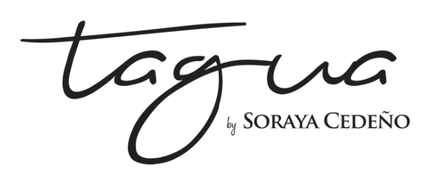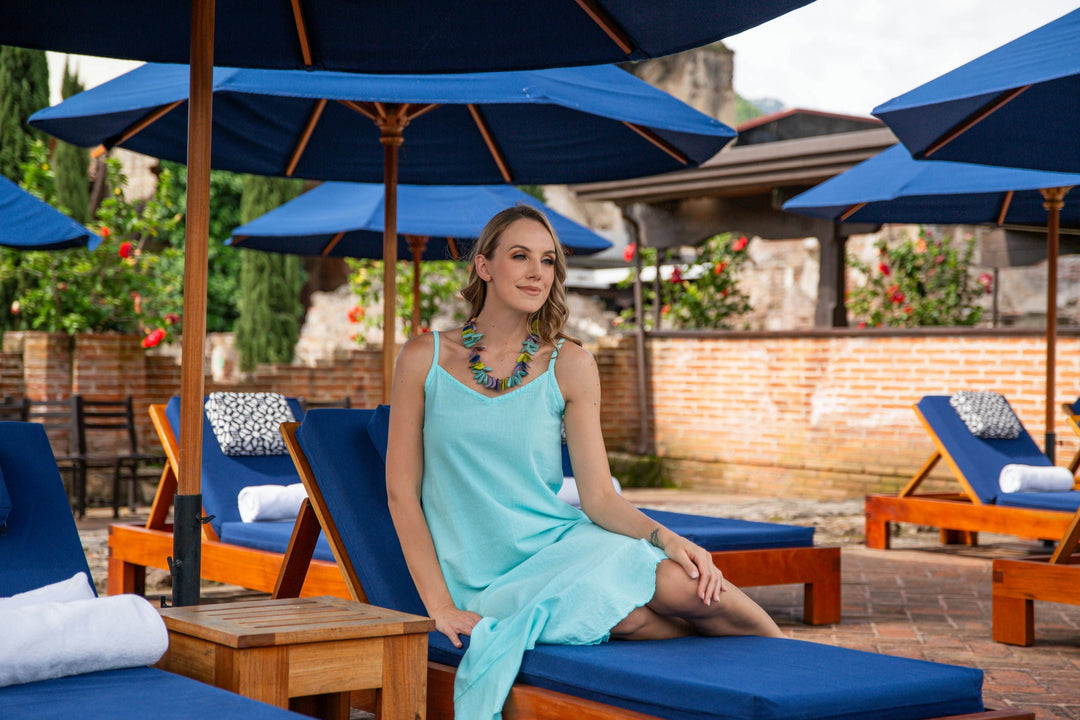The Art of Crafting Jewelry from Natural and Biodegradable Materials
Sustainable fashion is no longer a niche it’s a growing movement that is transforming how we design, produce, and wear accessories. In the United States and around the world, more consumers are making conscious choices, looking for products that reflect their values. This shift has opened the door for innovative materials, especially in jewelry.
Among these innovations, tagua nut jewelry stands out as a remarkable example of how natural and biodegradable resources can be transformed into beautiful, durable, and ethical pieces. Known as "vegetable ivory," tagua offers the beauty of traditional ivory without harming wildlife, making it a popular choice in eco-friendly jewelry and handmade sustainable jewelry markets.
At Tagua By Soraya Cedeno, this commitment to sustainability isn’t just a trend; it’s a guiding principle. Each piece is more than just an accessory; it’s a statement about protecting the planet while celebrating artistry.
1. Understanding the Tagua Nut: Nature’s Answer to Ethical Jewelry
The tagua nut comes from the seeds of the Phytelephas palm tree, native to the rainforests of Ecuador, Colombia, and parts of Peru. When dried, the nut develops a smooth, ivory-like texture, which is why it is often called “vegetable ivory.”
Why Tagua is Ideal for Sustainable Jewelry
-
Biodegradable: Unlike synthetic materials, tagua naturally decomposes without leaving harmful residues.
-
Durable: When properly treated, tagua is as strong as animal ivory and can last for years.
-
Renewable Resource: Harvesting tagua nuts does not require cutting down the palm tree; the nuts naturally fall to the ground when ripe.
-
Wildlife-Friendly: By using tagua instead of animal ivory, we help reduce poaching and protect endangered elephants.
Scientific studies, such as those published by conservation organizations, have shown that increasing demand for tagua products provides economic incentives for local communities to preserve rainforest habitats. This directly ties jewelry making to environmental protection.
2. The Journey from Nut to Necklace: The Tagua Crafting Process
Creating artisan jewelry from tagua nuts is a process that blends traditional skills with meticulous attention to detail. At Tagua By Soraya Cedeno, artisans, many of whom are based in Ecuador, follow a step-by-step process:
1. Harvesting
Mature tagua nuts are collected after they naturally fall from the palm tree.
2. Drying
The nuts are air-dried for several months until they harden to a dense, ivory-like consistency.
3. Cutting and Shaping
Artisans cut the nuts into slices or carve them into beads, pendants, or other desired shapes.
4. Polishing
Each piece is hand-polished to bring out its natural sheen.
5. Dyeing
Natural, non-toxic dyes are used to add vibrant colors, ensuring the process remains eco-friendly.
6. Assembling
The finished tagua pieces are combined with other sustainable materials like organic cotton cords or recycled metals to create unique jewelry.
The result? Boutique jewelry pieces that carry a piece of the rainforest’s story in every bead.
3. Tagua Jewelry’s Role in Sustainable Fashion
In the sustainable fashion industry, materials matter. Jewelry, while small in size, can have a significant environmental footprint if made from mined metals or synthetic plastics. Tagua jewelry offers a different path, one that supports ecological health, artisan livelihoods, and conscious consumerism.
Key Contributions of Tagua Jewelry to Sustainable Fashion:
-
Reduces Plastic Use: Tagua replaces synthetic materials in accessories, lowering reliance on petroleum-based plastics.
-
Promotes Ethical Sourcing: Artisans are paid fair wages, and materials are sourced without harming ecosystems.
-
Encourages Mindful Buying: Consumers are investing in pieces that last, rather than disposable trends.
Fashion brands, especially in travel retail and boutique markets, are increasingly adopting tagua jewelry as part of their collections to meet growing demand for authentic, responsible products.
4. The Human Touch: Supporting Artisan Communities
Behind every piece of handmade, sustainable jewelry lies the story of skilled artisans. In Ecuador, where much of the world’s tagua is sourced, jewelry-making provides a steady income for families and preserves cultural traditions.
Artisan jewelry production:
Preserves Traditional Craftsmanship
Many techniques have been passed down for generations.
Empowers Women
A significant percentage of tagua artisans are women who balance craftsmanship with family life.
Fosters Local Economies
By purchasing directly from artisans or brands that partner ethically, buyers help create financial stability in rural areas.
At Tagua By Soraya Cedeno, these partnerships are the foundation of the brand’s mission—to create beautiful, eco-friendly jewelry while supporting the hands that make it possible.
5. How Tagua Jewelry Has Changed the Sustainable Fashion Jewelry Industry
Ten years ago, sustainable jewelry was often seen as plain or limited in style. Today, thanks to materials like tagua, eco-friendly jewelry can be bold, colorful, and fashion-forward.
The Transformation
-
From Minimalist to Statement Pieces: Tagua’s ability to absorb dyes allows for vibrant colors that make each piece stand out.
-
From Niche to Mainstream: Once found mainly in artisan markets, tagua jewelry is now featured in boutique jewelry stores and airport travel retail shops across the United States.
-
From Local to Global: Increased awareness of sustainable fashion has given tagua jewelry international appeal, attracting customers who value both style and ethics.
This evolution has encouraged other jewelry makers to experiment with biodegradable and renewable materials, further pushing the industry toward eco-conscious innovation.
6. Caring for Your Eco-Friendly Tagua Jewelry
While tagua is durable, proper care ensures that your eco-friendly jewelry stays beautiful for years:
-
Keep it away from prolonged exposure to water.
-
Store it in a cool, dry place to avoid warping or cracking.
-
Clean gently with a soft cloth; avoid harsh chemicals.
Because tagua is a natural material, each piece will have unique patterns and variations, making your jewelry one-of-a-kind.
7. Why Boutique Jewelry Lovers Choose Tagua
Boutique jewelry shoppers often look for pieces that tell a story. Tagua jewelry offers:
-
Uniqueness: No two tagua nuts are identical, so each piece is distinct.
-
Sustainability: Perfect for those committed to eco-conscious living.
-
Cultural Connection: A link to the traditions and artistry of South American artisans.
In travel retail, where customers seek meaningful souvenirs, tagua jewelry offers both a memory and a mission, a wearable reminder of environmental responsibility.
8. Scientific Support for Natural and Biodegradable Jewelry Materials
Several environmental studies support the benefits of using natural and biodegradable materials like tagua:
-
Research from the Rainforest Alliance shows that tagua harvesting encourages rainforest conservation by providing economic value to standing forests.
-
Studies on material biodegradability confirm that plant-based materials, unlike plastics, break down without leaving toxic residues in soil or water.
-
Fair Trade organizations document the positive socio-economic impact of artisan-centered supply chains in developing countries.
By choosing tagua, consumers are aligning their purchases with proven environmental and social benefits.
Wear the Change You Want to See
Jewelry is more than decoration; it’s a reflection of your values, your personality, and your connection to the world. By choosing tagua nut pieces from Tagua By Soraya Cedeno, you’re supporting sustainable fashion, preserving rainforests, and empowering artisan communities.
From the palm trees of Ecuador to boutiques across the United States, each tagua necklace, bracelet, or earring carries a story of nature, craftsmanship, and conscious choice.
If you’re ready to embrace eco-friendly jewelry that’s as meaningful as it is beautiful, explore the full collection at Tagua By Soraya Cedeno and become part of a global movement toward sustainable style.




